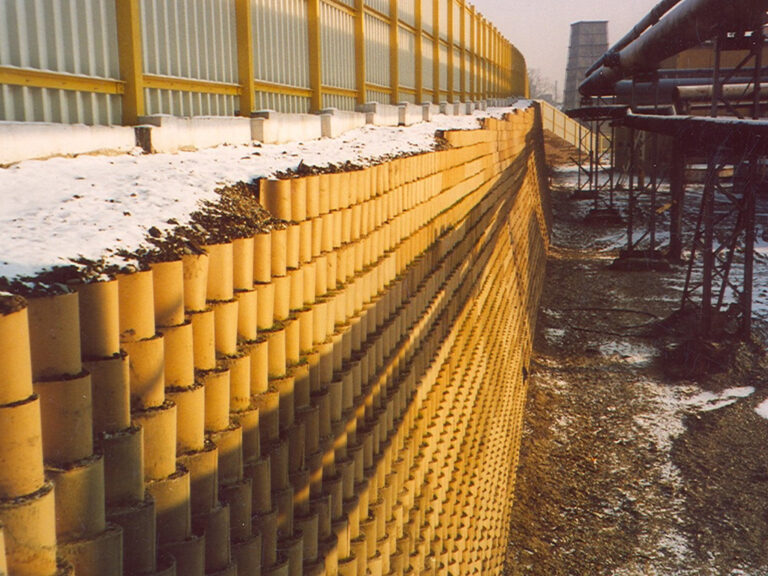RETAINING AND PROTECTION WALLS
RETAINING AND PROTECTION WALLS AND STRUCTURES ARE EFFECTIVE IN SECURING THE SITE
Ground instability is one of the most serious problems facing investors and property owners. Landslides, erosion and uncontrolled earth movements can lead to serious damage to infrastructure and significant financial losses. Retaining and protection walls are essential construction safeguards that effectively protect the site from landslides and other uncontrolled ground movements. These structures not only guarantee the stability of the ground, but also protect against erosion or flooding, ensuring the longevity and safety of the construction project. Due to their massive structure, retaining walls can carry heavy loads. Their main function is to protect the site from landslides and other loose materials. Retaining structures are indispensable in a wide range of applications - from road construction, to securing residential areas, to protecting industrial and agricultural areas.
Retaining walls adapted to site conditions
Murki oporowe A retaining wall can be made of a variety of materials, depending on the requirements of the specific project and site conditions. Concrete, the most commonly used material, is characterised by high strength and durability, making it ideal for heavy-duty applications. Stone, on the other hand, is an excellent choice for landscape projects due to its natural appearance and high weather resistance.
Protection walls stabilize the ground against landslides
Retaining walls, like retaining walls, serve the function of stabilizing the soil and protecting it from landslides. However, they are usually lighter and can be made of various materials, such as precast concrete, steel or modern composite materials. This type of retaining protection element is often used in places where quick installation is crucial and space is limited. Due to their design, retaining walls can be adapted to the specific requirements of the project, offering flexibility and versatility in engineering applications.
SELECTED COMPLETED PROJECTS
Components
Flexibility of the material
OPTIMAL DESIGN OF RETAINING ELEMENTS AND MOST STATE-OF-THE-ART METHODS FOR SAFEGUARDING SLOPE AGAINST LANDSLIDING
Retaining walls can be made from a wide range of materials, depending on the specifics of the project. Popular retaining elements include precast concrete, steel structures or composites. The variety of materials available makes it possible to select the optimum retaining wall structure to suit the specific requirements of the project.
The use of innovative GEOMAXXⓇ and SMARTMAXXⓇ geocells allows these protection and retaining walls to be more effective. With geocells technology, these structures gain additional stability by distributing loads evenly and increasing the interaction between the soil and building materials. A distinguishing feature of geocells is the unique honeycomb design, which allows even low-quality aggregates to be used as backfill material, which can result in cost reductions. Modern systems using geosynthetics are comprehensive solutions that provide maximum protection against ground instability and the associated risks.
Learn about the possibilities of using Geomaxx® cellular geonets.













